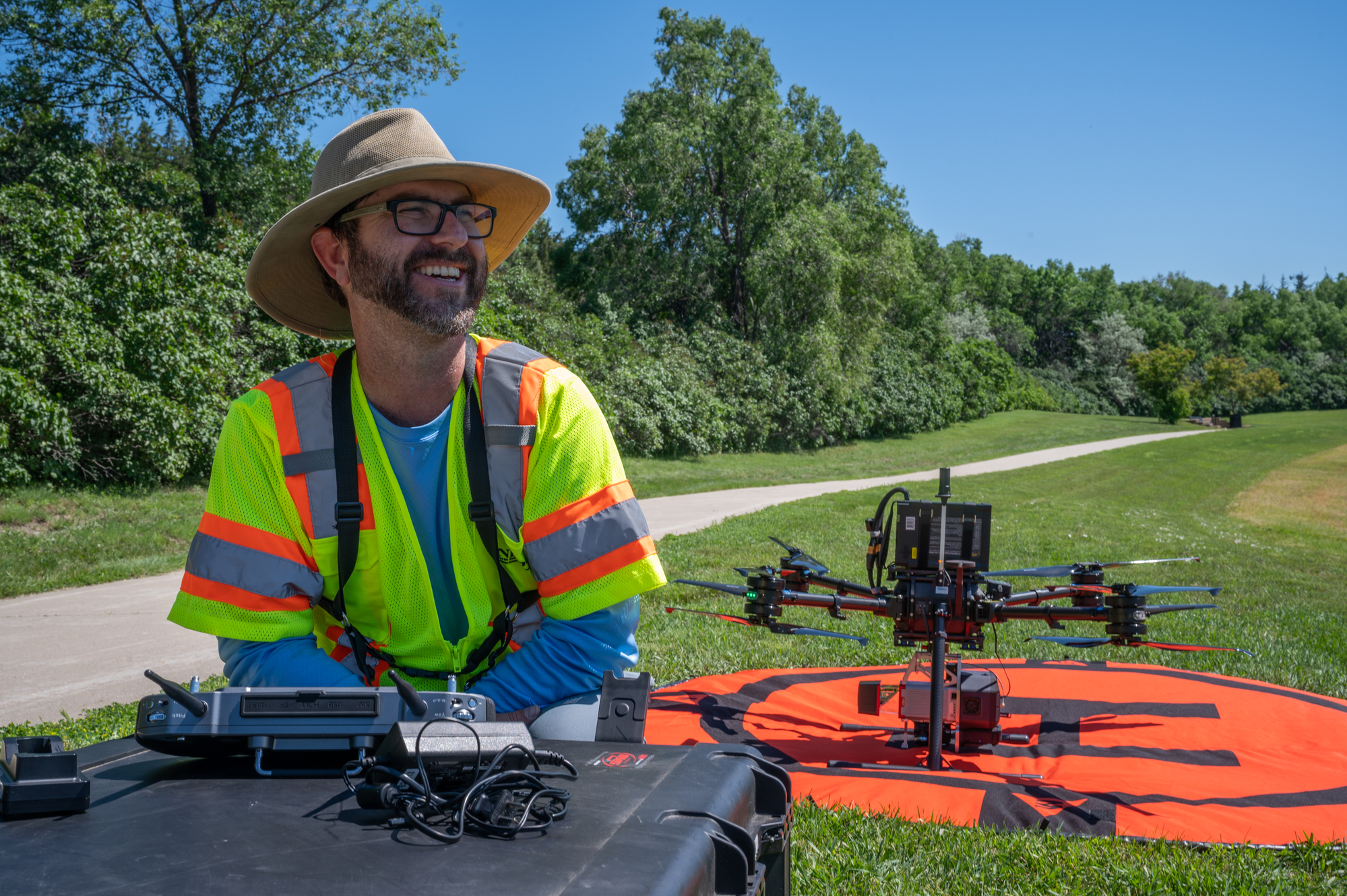Program Overview
NDDOT maintains a strong UAS presence with drone pilots in all eight districts and many divisions in the central office. As a leading agency for uncrewed aircraft, the department also serves as a shared resource for local and state agencies for UAS program development and flight operations.
Our versatile uncrewed aircraft fleet and Light Detection and Ranging (LiDAR) capability help support the state’s need for critical data. With roadway safety in mind, UAS efforts include aerial photography, structural inspections, mapping, emergency management, construction, and traffic monitoring.

UAS Policies, Regulations, Standards, and Guidelines
UAS Policies and Regulations
Follow the links below to read about policies and regulations:
UAS Standards
To read in detail about standards related to Unmanned Aircraft Systems, including design, performance and safety, visit the links below:
- ASTM F38 small Unmanned Aircraft Systems(sUAS) Standards Web Page
- Standard Practice for Operational Risk Assessment of sUAS
- Standard Practice for Methods to Safely Bound Flight Behavior of sUAS Containing Complex Functions
- Standard Practice for Ensuring Dependability of Software Used in sUAS
- Standard Specification for sUAS Parachutes
- Design of the C2 system for sUAS
- Standard Guide for Training for Remote Pilot in Command of UAS Endorsement
- Standard Practice for Seeking Approval for BVLOS sUAS Operations
- Standard Practice for Maintenance and Continued Airworthiness of sUAS
- Standard Specification for Batteries for Use in sUAS
Federal Contributions
UAS Integration Pilot Program
In 2017, the U.S. DOT announced that NDDOT was selected as one of 10 participants in the UAS Integration Pilot Program, an initiative aimed at shaping the future of drones in America.
The three-year program enabled agencies to work on policy that could safely advance UAS operations, including beyond visual line of sight, flights over people and night operations.
As the lead applicant and program manager in North Dakota, NDDOT worked with partners and stakeholders from across the state, including the Northern Plains UAS Test Site in Grand Forks and city, state and tribal agencies.
UAS BEYOND
In 2020, NDDOT was selected as one of eight participants in the UAS BEYOND program. BEYOND is the next phase of the Integration Pilot Program which will extend the federal program over the next four years.
This initiative focuses on working toward operating under established rules rather than waivers, collecting data to develop performance-based standards, collecting and addressing community feedback, and streamlining the approval processes for drone integration.
The Federal Aviation Administration is working with all the original lead participants to continue this successful work with new focused efforts to tackle remaining UAS challenges such as beyond visual line-of-sight operations and societal and economic benefits through BEYOND.
